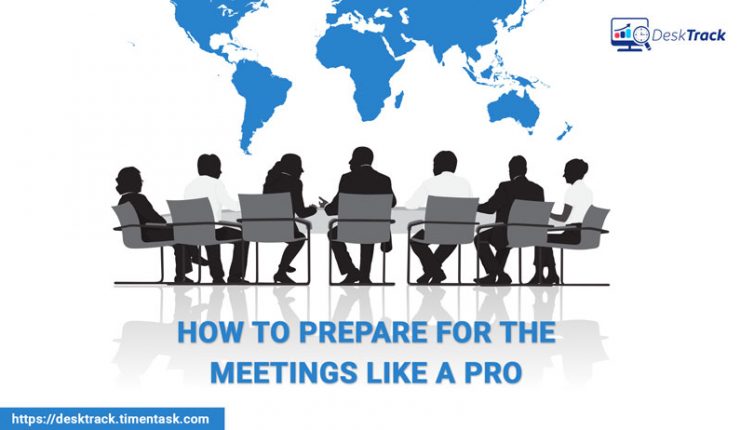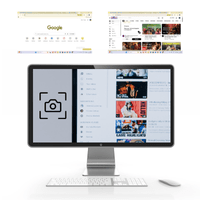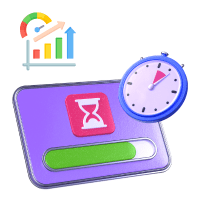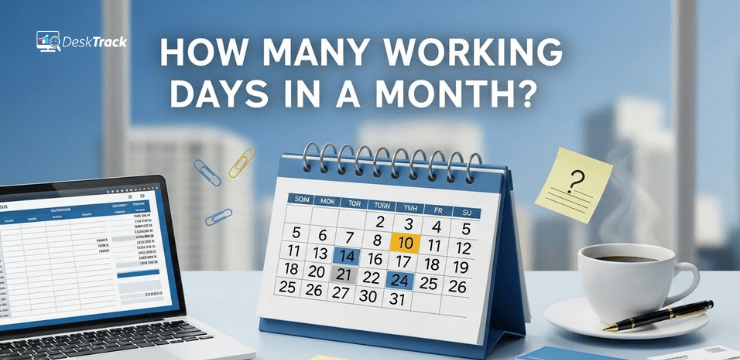
Maximizing Meeting Productivity is crucial for effective leadership. This guide simplifies the process, offering valuable insights into meeting types and best practices. Prepare for the Meetings to live focused, productive, and accountable. Engage your crew in fruitful discussions to deal with key discussion points in a meeting. Together, let’s optimize time and achieve success.
Managers play a vital role in walking green meetings. Maximizing Meeting Productivity approach know-how of numerous meeting kinds and implementing powerful strategies. Prepare for the Meetings by setting clear objectives, creating a schedule, and encouraging participation. Keep discussions concise, relevant, and tasty to cope with essential dialogue factors in a meeting. Let’s beautify collaboration and productiveness through well-dependent and useful meetings.
What are Business Conferences all Approximately?
An enterprise meeting is when people come together to speak about work-related topics. Its objective is to achieve “Maximizing Meeting Productivity.” In an assembly, anybody talks and listens to each other. It’s critical to “Prepare for the Meetings” by accumulating facts and considering the discussion points in an assembly. The meeting starts with a person main and placing the timetable. People percentage their thoughts, ask questions and make decisions collectively.
It’s essential to be respectful and polite, taking turns to talk. People take notes to take into account what changes into mentioned. The meeting ends with a precis and next steps. By having powerful meetings, companies can accomplish their goals and work efficiently. “Maximizing Meeting Productivity” is prime to achievement. So, put together nicely, participate actively, and contribute your ideas to make the assembly meaningful and efficient.
Prepare for the Meetings: Different Types of Business Meeting
When it comes to running a business, meetings play a crucial role. Preparing for the meetings is essential to ensure a good and successful meeting. Every manager needs to know some common types of business meetings.
- Team Meetings – Team meetings bring together department or project team members to discuss progress, share updates, and collaborate on tasks. These meetings foster teamwork and ensure everyone is on the same page.
- Board Meetings – Board meetings involve the board of directors and executives discussing the company’s strategic direction, financial performance, and major decisions. These meetings often require thorough preparation to address key issues.
- Sales Meetings – Sales meetings are held to review sales performance, set targets, and discuss revenue generation strategies. They involve sales teams and managers brainstorming ideas to improve sales processes and achieve targets.
- Client Meetings – Client meetings are vital for building and maintaining relationships with clients. These meetings focus on understanding client needs, presenting proposals, negotiating contracts, and addressing concerns or feedback.
- Staff Meetings – Staff meetings involve employees at all levels communicating important updates, addressing concerns, and gathering feedback. These meetings promote transparency and ensure everyone feels involved and informed.
- Training Meetings – Training meetings are conducted to provide employees with new skills, knowledge, or information relevant to their roles. These interactive meetings may involve presentations, workshops, or hands-on activities.
- Project Meetings – Project meetings gather team members working on a specific project to discuss progress, challenges, and upcoming milestones. These meetings help ensure coordination, track progress, and address any roadblocks.
- Performance Review Meetings – Performance review meetings assess an employee’s performance, set goals, and provide feedback. These meetings are essential for personal and professional development and should be conducted regularly.
- One-on-One Meetings – One-on-one meetings are typically between a manager and an employee. They provide an opportunity for personalized feedback, goal setting, mentoring, and addressing any individual concerns.
- Brainstorming Meetings – Brainstorming meetings encourage creativity and innovation by bringing together team members to generate ideas and solutions for specific challenges or projects. These meetings often involve interactive activities and open discussions.
How to Prepare For The Meetings Like a Pro
Collaborate on the agenda so everyone can contribute
By involving everyone in creating the meeting agenda, you ensure that the important topics are covered. This approach also encourages shy individuals to share their perspectives. Use collaborative tools to prepare the agenda and provide equal opportunities for input.
Clearly define and share the Meeting’s objectives beforehand
Before the meeting starts, make sure all participants understand what needs to be accomplished. This clarity lets attendees come prepared with ideas and questions, aiding productive discussions. Write down the objectives to provide a reference point during the meeting.
Plan and Assign tasks and deadlines as Actionable Outcomes
Although the final decisions will likely occur during the meeting, the meeting organizer should have a strategy for establishing the next steps and action items. Use the meeting agenda to determine what needs to be discussed and decided. Answer the critical three-part question: Who is responsible for what by when?
Practical Steps for Successful Face-to-Face Meetings
Get to know who will be there
Before the meeting, take a moment to learn about the people attending. Look at their names, faces, and roles on LinkedIn or the company’s org chart. This will help you remember everyone and make a good impression.
Familiarize yourself with the Meeting Space
Choose a suitable room for your meeting, considering the number of attendees. If you’re in an unfamiliar location, visit the space beforehand to get acquainted with the equipment, like projectors or sound systems you’ll use. This prevents last-minute surprises.
Understand Your Audience’s Knowledge
Avoid repeating information or leaving people feeling left out. Send a pre-meeting assessment to gauge attendees’ familiarity with the topics to be discussed. This way, you can tailor your presentation accordingly and ensure everyone can follow along.
Best Ways to Have Successful Hybrid Meetings
Make sure everyone has a chance to participate equally
Use virtual tools instead of traditional methods like sticky notes on a whiteboard to gather feedback and ideas. This way, everyone can contribute regardless of their location.
Engage remote attendees proactively
It’s easy to forget about people joining remotely when in-person conversations happen. Plan to individually ask for input from each attendee or use interactive polls for larger meetings. While attendees in person can reply via text or smartphone, remote workers can join using a browser.
Send a follow-up survey after the meeting
This helps ensure everyone understands their next steps and allows final thoughts or takeaways. Tools like Poll Everywhere allow the real-time collection of responses, which can be kept anonymous to encourage honest feedback.
Meeting organizers should consider these best practices to create an inclusive and engaging environment for hybrid meetings. By providing equal opportunities for participation, actively involving remote attendees, and seeking feedback through surveys, teams can collaborate effectively regardless of their physical location.
Best Practices for Having Successful Remote Meetings
Remote meetings can be challenging, but there are best practices to make them more effective. Here are three tips:
- Start with an icebreaker to get everyone comfortable and contributing. This can be a fun way to get creative juices flowing and ease into the meeting.
- Be flexible about camera usage. While showing faces on-screen may be appropriate for smaller groups, it can contribute to fatigue and burnout for larger meetings. A “do what makes you comfortable” policy can assist individuals in staying alert and able to contribute.
- Avoid having consecutive meetings. Zoom fatigue exists, and scheduling too many meetings can cut into people’s prep and reading time. Encourage employees to block out time before important calls so they have time to stretch, get a drink, and focus on the conversation or challenge at hand.
By following these best practices, remote meetings can be more productive and enjoyable for everyone involved.
Read More: Impact of Work from Home Monitoring Software
Game-changing Tips for Running a Successful Meeting
Meetings are an essential part of any organization, but they can also significantly drain productivity if not managed correctly. You need to have a clear plan and a well-organized structure to make the most out of your meetings. Here are some game-changing tips for running a successful meeting that will help you increase meeting productivity:
Define the Meeting Objectives
Before scheduling a meeting, it’s essential to determine the meeting’s purpose. What do you want to achieve? What are the goals? Defining the objectives will help you stay focused and ensure everyone is on the same page.
Create an Agenda + Send Calendar Invites
Once you have defined the objectives, create an agenda that outlines the topics to be discussed and the time allotted for each. Share the agenda with the participants before the meeting and send calendar invites to ensure everyone knows the meeting’s date and time.
Choose Attendees Wisely
Invite only those who need to attend. Few attendees can lead to a lack of focus and productivity. Choose the attendees based on their role in the meeting and contribution to the discussion.
Create a Safe Space for Collaboration
Encourage open communication and collaboration by creating a safe space for everyone to share their thoughts and ideas. Make sure everyone feels comfortable and respected.
Best Practices to Stay on Track
Stick to the agenda and keep the discussion on track. Refrain from getting sidetracked by unrelated topics or discussions irrelevant to the meeting’s objectives.
Clear Actions, Owners, and Timelines at the End
End the meeting with clear actions, owners, and timelines. Ensure that everyone is aware of what has to be done and when. Follow up after the meeting to ensure that everyone is on track.
By following these tips, you can run a highly effective, productive, and engaging meeting. Remember to keep the meeting human-to-read and crisp, and easy to understand. Use an active voice, be unique, and avoid plagiarism. Use the content keyword “meeting productivity” at least eight times.
The 5 Key Meeting Roles Your Meetings Should Include
Meetings are essential to any organization, but they can be unproductive and time-consuming if not managed correctly. Assigning clear meeting roles is a vital practice that benefits the participants and the company. According to research, the individuals who plan and facilitate the meeting have a direct impact on the meeting’s productivity.
To ensure that your meetings are efficient and well-organized, to foster conversations where everyone’s voice is heard, to advance psychological safety, and to maximize the productivity of your meetings using technology, it is crucial to define meeting responsibilities.
Leader (Chair)
The leader is the person who arranges, leads, and concludes the meeting. They are responsible for setting the agenda, ensuring that the meeting stays on track, and ensuring everyone has a chance to participate. The leader should also ensure that the meeting starts and ends on time.
FacilitatorMeeting
The meeting is run by the facilitator. Prior to the meeting, this person collaborates with the group to design the agenda. They lead the discussion, ensure everyone participates, and maintain the meeting’s productivity. Additionally, the moderator should maintain objectivity throughout the discussion while actively seeking out each participant’s opinions.
Timekeeper
The timekeeper is responsible for keeping the meeting on schedule. They ensure that each agenda item is discussed within the allotted time and that the meeting starts and ends on time. The timekeeper should also remind the group when they have five minutes to discuss a topic.
Notetaker
Important judgements, insights, directives, and other outcomes are noted. They’ll make sure that these notes are later published as well. The notetaker should also ensure that everyone’s contributions are accurately captured.
Tech Host/Chat Moderator
The Tech Host/Chat Moderator manages the technology used during the meeting. They ensure that everyone can hear and see each other, troubleshoot any technical issues, and manage the chat function if there is one.
Conclusion
You want your guests to be active participants rather than passive listeners whether your next important meeting is held in person, virtually, or in a hybrid of the two. Poll Everywhere makes it simple to incorporate meeting attendees with real-time polls, word clouds, open-ended questions, and dozens of other interactive activities. After all, the most motivational conversations are rarely monologues.
Download our free guide for valuable guidance on creating a remote-ready workforce if you’re searching for additional suggestions on how to run successful remote meetings. With the correct technologies, you can enable people to contribute ideas and insights that improve your business while maintaining the interest of your online audiences in events of any scale.







